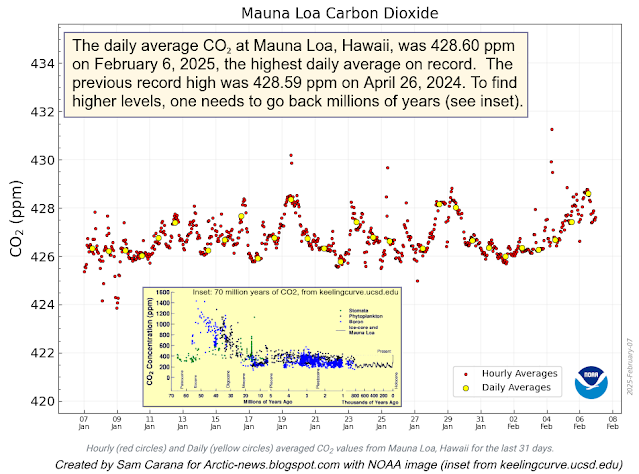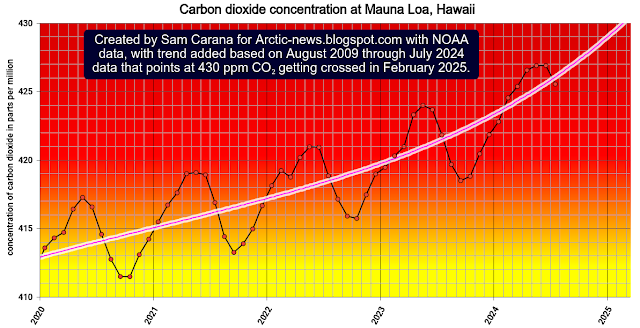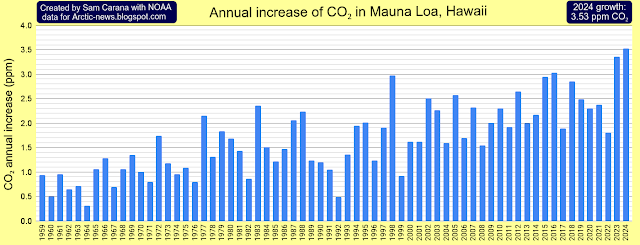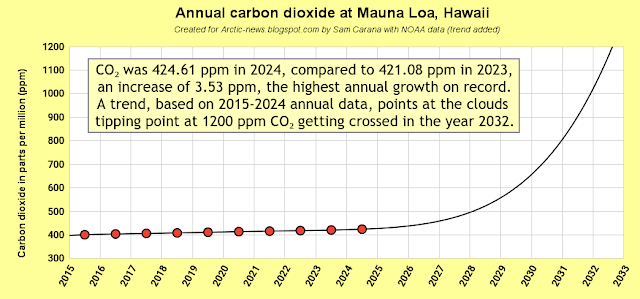The above image, from an earlier post and discussed here, has a trend added based on August 2009 through July 2024 data. Ominously, the trend points at 430 ppm CO₂ getting crossed in February 2025, which would constitute a jump of 10 ppm in two years time (from ~420 ppm in February 2023 to ~430 ppm in February 2025).
The above trend illustrates that the clouds tipping point could get crossed in early 2032 due to rising CO₂ alone, which on its own could push temperatures up by an additional 8°C. The clouds tipping point is actually at 1200 ppm CO₂e, so when growth of other greenhouse gases and further mechanisms are taken into account, the tipping point could be crossed much earlier than in 2032, possibly as early as in 2026, as discussed in an earlier post.
Climate Emergency Declaration
The situation is dire and the precautionary principle calls for rapid, comprehensive and effective climate action to reduce the damage and to improve the situation, as described in this 2022 post, where needed in combination with a Climate Emergency Declaration, as discussed at this group.
• NOAA – Global Monitoring Laboratory – monthly trends in CO₂
https://gml.noaa.gov/ccgg/trends/monthly.html
https://arctic-news.blogspot.com/p/pre-industrial.html
• Carbon dioxide growing rapidly
• Double Blue Ocean Event 2025?
https://arctic-news.blogspot.com/2024/10/double-blue-ocean-event-2025.html
• Did a Terminal Temperature Acceleration Event start in December 2024?
• Transforming Society
https://arctic-news.blogspot.com/2022/10/transforming-society.html
• Climate Plan
https://arctic-news.blogspot.com/p/climateplan.html
• Climate Emergency Declaration
https://arctic-news.blogspot.com/p/climate-emergency-declaration.html





